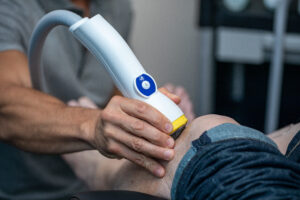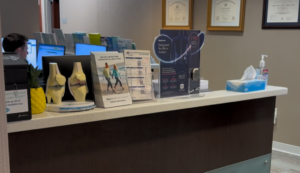You bumped your leg hard on a coffee table.
Days later, the bruise is bigger, warmer, and you feel a dull ache. Can a bruise turn into a blood clot?
John S. Georgy, MD, MBA
Pain Management Physician
Fellowship Trained in Pain Management

Table of Contents
- What Is the Difference Between a Bruise and a Blood Clot?
- When Should You Be Concerned After a Bruise or Injury?
- What Are the Warning Signs of a Blood Clot?
- Who Is Most at Risk of Developing a Blood Clot?
- Why Is Early Medical Evaluation Important?
- Who Is Dr. John S. Georgy and How Can He Help?
What Is the Difference Between a Bruise and a Blood Clot?
A bruise happens when tiny blood vessels beneath your skin break, causing discoloration and tenderness. It’s a surface-level issue that usually heals with time and care.0000
A blood clot, however, forms deeper inside your veins, blocking blood flow and potentially leading to serious complications like pulmonary embolism if untreated. Unlike bruises, clots are hidden beneath the skin and can be life-threatening.

When Should You Be Concerned After a Bruise or Injury?
Most bruises heal without incident, but you should be alert if the injury involved significant trauma or if you notice swelling that worsens over time. Limited mobility or immobility after an injury, such as being in a cast or recovering from surgery, can also increase the risk of clot formation.
What Are the Warning Signs of a Blood Clot?

Be aware of these symptoms after an injury, which may suggest a clot:
- Persistent swelling in one limb
- A heavy, tight, or warm sensation in the area
- Localized tenderness that’s different from usual soreness
- Skin that looks red, bluish, or discolored
- Veins that are swollen or feel hard under the skin
If you experience any of these signs, seek medical attention promptly.
Who Is Most at Risk of Developing a Blood Clot?
Certain factors raise your likelihood of clot formation after injury:
- Age 60 or older
- Personal or family history of blood clots
- Smoking or use of tobacco products
- Use of hormone therapies, such as birth control
- Recent orthopedic surgery or immobilization
- Chronic conditions including obesity, cancer, or clotting disorders
If you fall into any of these categories, extra caution after injury is essential.

Why Is Early Medical Evaluation Important?
Early diagnosis can prevent dangerous complications like pulmonary embolism. At AOSMI, we utilize advanced, non-invasive imaging methods such as Doppler ultrasounds to detect clots quickly. If found, our team works with vascular specialists to create an effective, individualized treatment plan.
Who Is Dr. John S. Georgy and How Can He Help?
Board-Certified Pain Management Physician | Fellowship Trained in Pain Management
Dr. John S. Georgy, MD, MBA, is a trusted physician who bridges the gap between pain management and vascular injury care. With expertise in musculoskeletal imaging, ultrasound-guided diagnostics, and interventional procedures, Dr. Georgy ensures that unusual pain isn’t dismissed—but decoded. He leads patients from uncertainty to clarity and recovery with compassion and evidence-based care.
Quick fact: According to the CDC, an estimated 900,000 people per year in the U.S. experience DVT, and many of these begin after minor trauma or immobilization. Up to 30% may develop complications if left untreated.
“Persistent pain after injury could be your body’s alarm. I help patients listen—and act early—so we can prevent complications and promote healing.”
Schedule a Consultation
Don’t ignore persistent pain or unusual bruising. Schedule your evaluation with Dr. Georgy—early diagnosis can make all the difference. 📞 Call 732-720-2555 or fill out the form below.







